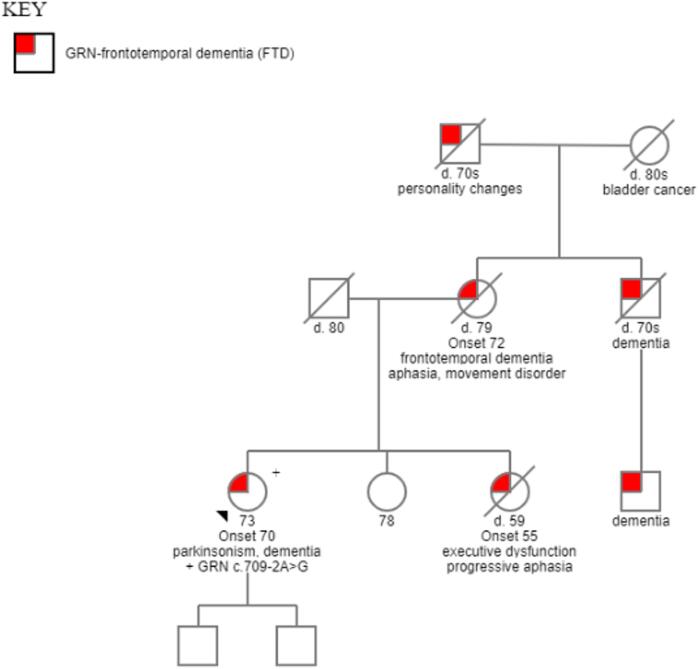由粒蛋白前基因突变引起的家族性额颞叶痴呆1例
IF 1.9
Q3 CLINICAL NEUROLOGY
引用次数: 1
摘要
阿尔茨海默病之后,额颞叶痴呆(FTD)是早发性痴呆最常见的病因。在家族性FTD中已经发现了几种基因突变,前颗粒蛋白(GRN)突变约占家族性FTD病例的20-25%,约占FTD总病例的10%。我们报告了一例患有非典型帕金森病的家族性FTD患者,该患者被发现患有GRN额颞叶痴呆(GRN-FTD),具有致病性剪接位点突变(c.709-2A>;G),并且家族成员之间存在显著的表型异质性。本文章由计算机程序翻译,如有差异,请以英文原文为准。


A case of familial frontotemporal dementia caused by a progranulin gene mutation
After Alzheimer’s disease, Frontotemporal dementia (FTD) is the most common cause of early-onset dementia. Several genetic mutations have been identified in familial FTD, with mutations in progranulin (GRN) accounting for approximately 20–25% of familial FTD cases and about 10% of total FTD cases. We report the case of a familial FTD patient with atypical parkinsonism who was found to have GRN frontotemporal dementia (GRN-FTD) with a pathogenic splice site mutation (c.709-2A > G) and notable phenotypic heterogeneity among family members.
求助全文
通过发布文献求助,成功后即可免费获取论文全文。
去求助
来源期刊

Clinical Parkinsonism Related Disorders
Medicine-Neurology (clinical)
CiteScore
2.70
自引率
0.00%
发文量
50
审稿时长
98 days
 求助内容:
求助内容: 应助结果提醒方式:
应助结果提醒方式:


